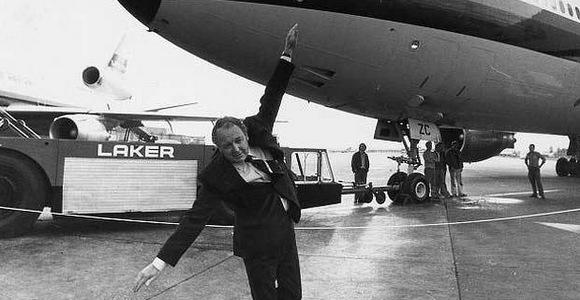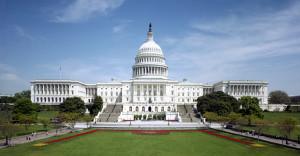Who’s Your Daddy, Budget Airlines? — #TBT Week of February 8


In the spirit of #TBT (“Throwback Thursday,” not Brazil’s Tabatinga Airport) FlyerTalk takes a look back at the events that helped shape modern aviation. Here are just a few moments from history that changed the face of the industry during the week of February 8.
February 8, 1966
Sir Freddy Laker announced the formation of the world’s first low-cost carrier — Laker Airways. The budget carrier, operating from London Gatwick Airport (LGW), introduced the flying community to cheap fares at the expense of many common luxuries, including ticket purchasing the day of travel and paying for food while onboard.
Although Laker Airways folded 16 years later, the concept airline is credited for planting the seed for a number of modern low-cost carriers, including EasyJet and Ryanair.
February 9, 1963
The brand-new Boeing 727, announced nearly three years prior, celebrated its first flight from Washington’s Renton Field. The three-engine jet was designed specifically to serve smaller airports that could not accommodate the four-engine Boeing 707.
United Airlines and Eastern Airlines both ordered 40 of the jets when they were announcement, with United receiving the first 727 for commercial use in October 1963.
February 10, 1944
American Airlines Flight 2, flying from Los Angeles to New York with scheduled stops, mysteriously crashed into the Mississippi River shortly before midnight. The Douglas DC-3 went down after taking off from Little Rock National Airport (now known as Clinton National Airport) while en route to Memphis Municipal Airport.
All 24 souls onboard were lost in the crash. Despite an extensive investigation, the Civil Aeronautics Board — predecessor to the Federal Aviation Administration and the National Transportation Safety Board — was unable to determine the cause of the accident.
February 11, 2000
One year after the announcement of the new airline, JetBlue began regular service out of John F. Kennedy International Airport (JFK), with its first flight departing JFK for Fort Lauderdale/Hollywood International Airport (FLL). Operating a fleet of Airbus A320 aircraft, the airline was the first to offer live satellite TV in every seat.
February 12, 2009
Colgan Air Flight 3407, branded as a Continental Connection flight from Newark Liberty International Airport (EWR) to Buffalo Niagara International Airport (BUF), crashed into a house during final approach. A total of 50 people were killed in the accident, including all 49 souls onboard and one person in the house.
An investigation conducted by the National Transportation Safety Board determined that the flight went down due to pilot error, with pilot fatigue contributing to the crash. The investigation’s results prompted Congress to pass the Airline Safety and Federal Aviation Administrative Extension Act of 2010, which changed flight duty and rest requirements for commercial pilots.
February 13, 2002
Born of the Aviation and Transportation Security Act of 2001, the Transportation Security Administration officially took charge of airport security from the Federal Aviation Administration. Originally part of the Department of Transportation, the TSA hired 60,000 employees and implemented security standards at 400 American airports by the end of the year.
Today, the TSA employees approximately 51,000 security officers and remains in charge of airport security operations.
February 14, 1975
Lifelong friends Moritz Suter and Peter Kalt came together to form a new airline in Switzerland — Business Flyers Basel AG. Originally an air taxi company, the new airline would not operate commercial flights until 1978, when the airline changed its name to Crossair.
In 2002, Crossair acquired the assets of the failing Swissair and became Swiss International Air Lines, the flag carrier for Switzerland. Today, Swiss is a subsidiary of Lufthansa Group.
[Photo: The Telegraph]






















Not correct at all about Laker introducing the first low-cost in 1966. Laker Airways then was a charter operator from the start, one of very many around European holiday flights at the time. Their first Skytrain flight on which you could book individual seats was 11 years later, in September 1977. As Laker went bankrupt in February 1982, Skytrain therefore only ran for just over 4 years, and as the company went out of business through running it, it's difficult to claim a success. There had been a range of other low fare long haul services from Britain well beforehand, including the Hunting-Airwork services to Africa starting in the 1950s. Laker never did short-haul scheduled flights so can't be seen as a model for Easyjet or Ryanair - other operators such as PSA in California were more the model for these.